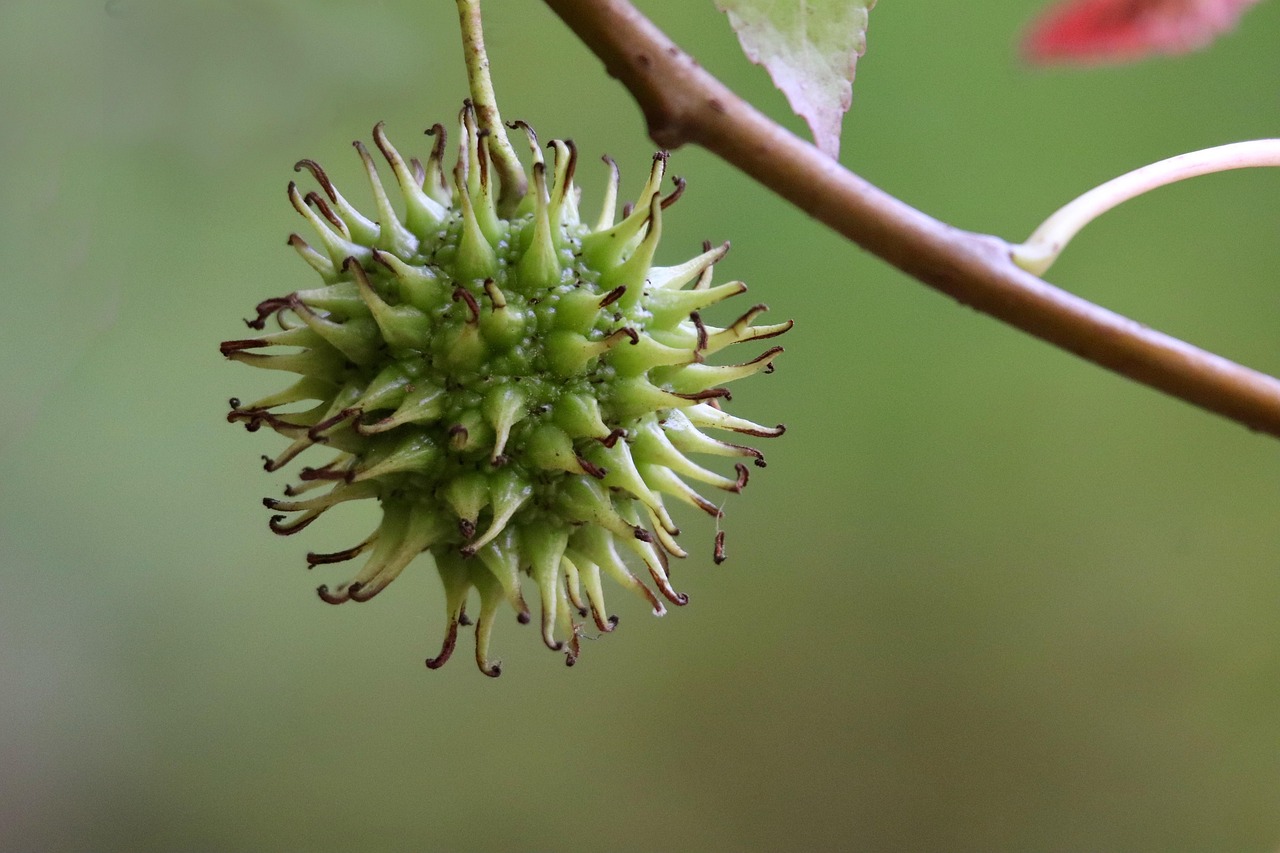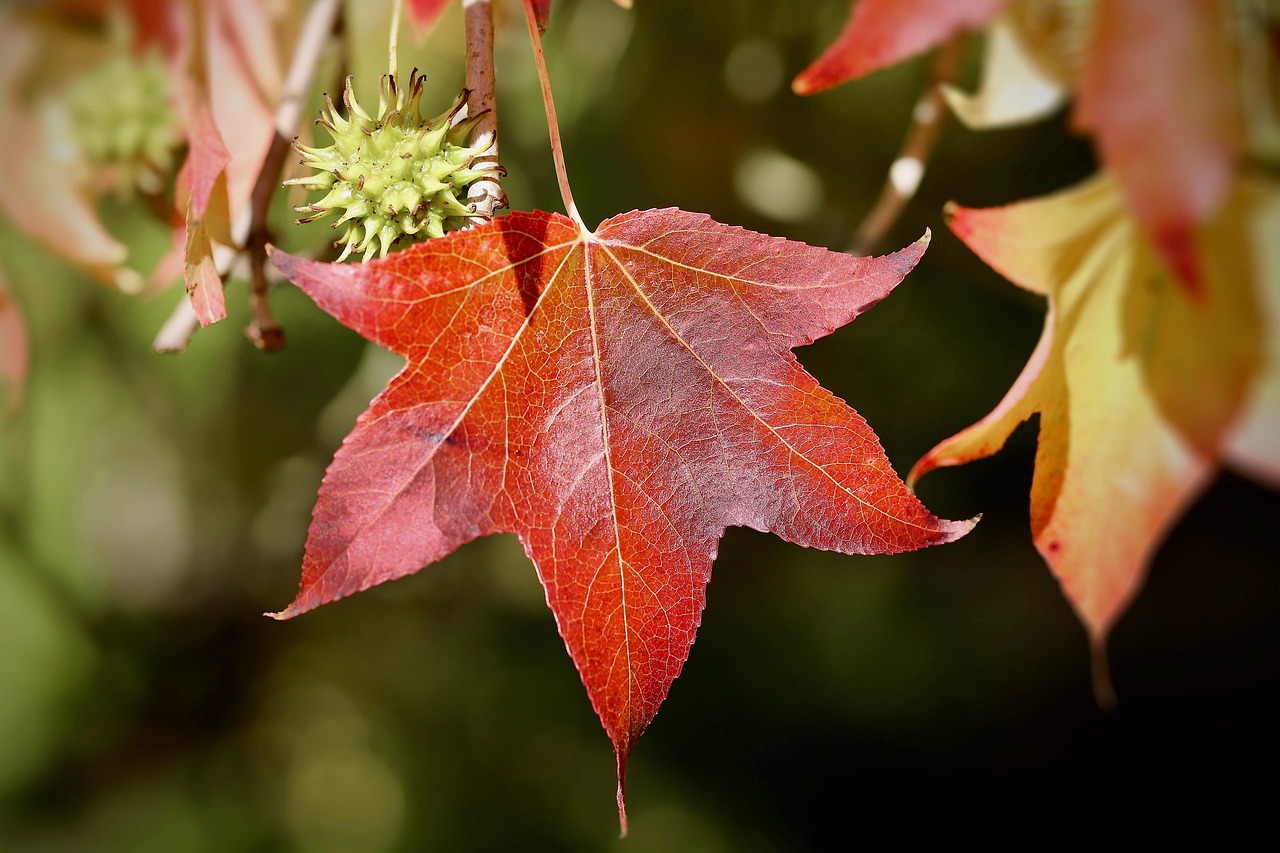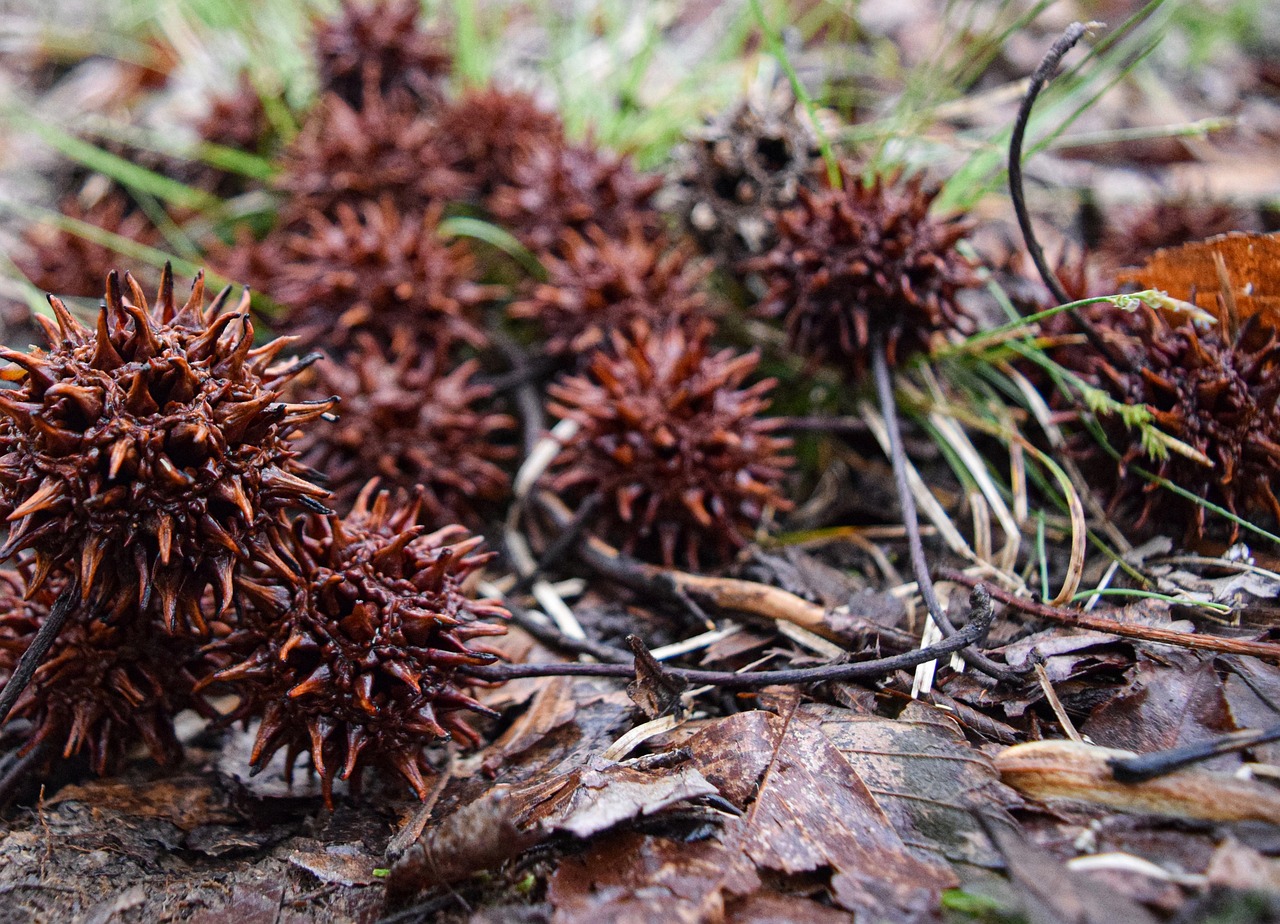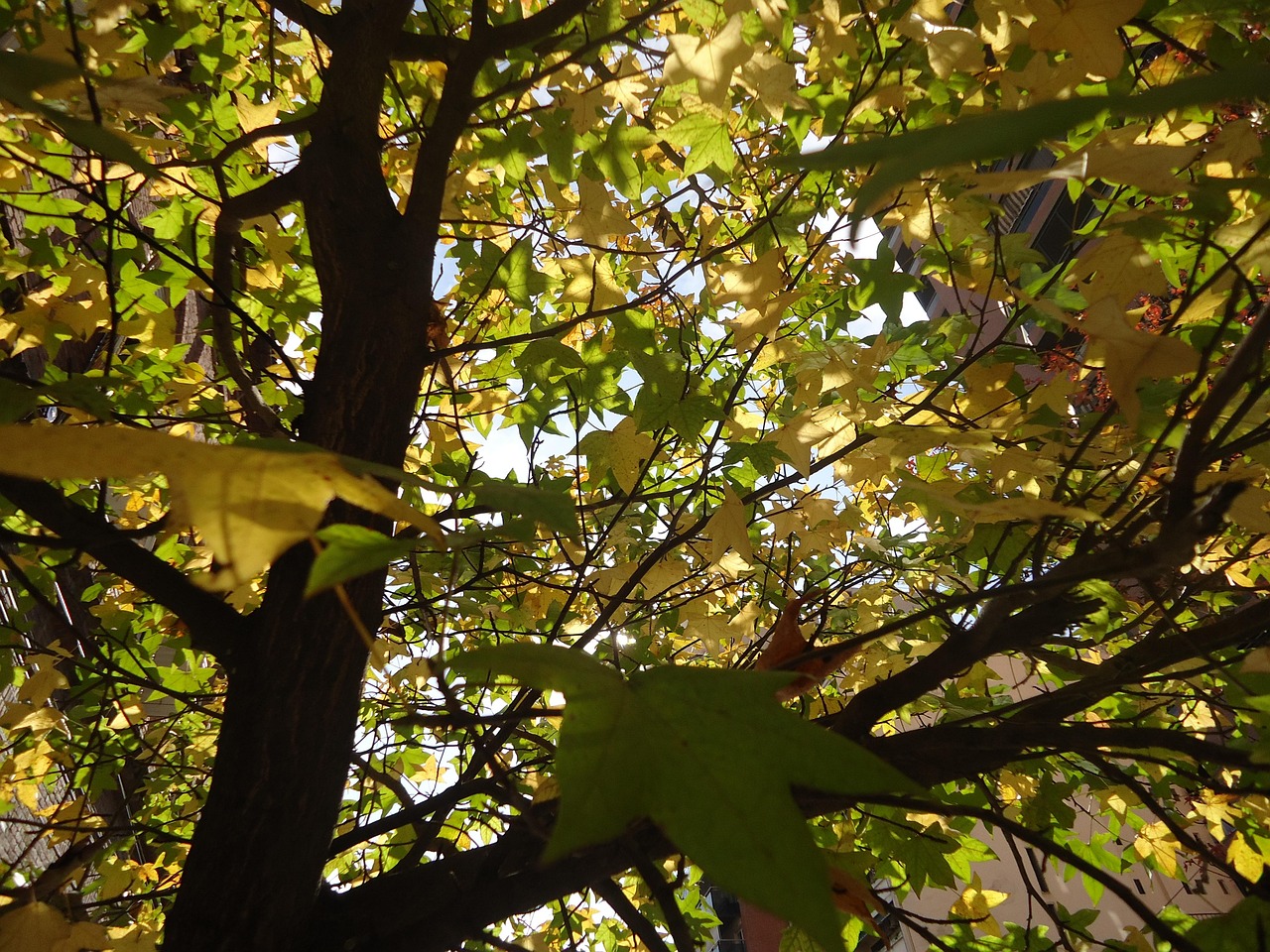Sweetgum trees, known scientifically as Liquidambar styraciflua, are native to the southeastern United States. They thrive in regions with warm climates, notably in areas ranging from Florida to southern Illinois and as far west as Texas. These trees are commonly found in moist, well-drained soils along riverbanks and in lowland forests.
Understanding Sweetgum Trees

Sweetgum trees are a popular choice for landscaping due to their striking star-shaped leaves and vibrant fall colors. The leaves change from green to shades of yellow, orange, and red, making them a stunning addition to any garden. Furthermore, these trees can grow up to 75 feet tall and have a broad, pyramidal shape that adds to their ornamental value.
These trees are not just aesthetically pleasing; they also play a crucial role in their native ecosystems. Sweetgum trees provide habitats for various wildlife species and contribute to soil health through leaf litter decomposition. Additionally, their unique seed pods, often referred to as “gumballs,” provide food for birds and small mammals.
Native Regions of Sweetgum Trees
The sweetgum tree is predominantly found in the southeastern United States. However, its range extends into several other areas. Below is a list of key states where sweetgum trees naturally grow:
- Florida
- Georgia
- Alabama
- Mississippi
- Louisiana
- South Carolina
- Tennessee
- Arkansas
- Texas
- Illinois
These states provide ideal conditions for sweetgum trees due to their warm climates and rich, moist soils. They are commonly found in mixed hardwood forests, often alongside oaks, maples, and pines. The sweetgum tree adapts well to different soil types but prefers areas with good drainage.
Growth Conditions and Habitat Preferences
Sweetgum trees thrive in environments that offer specific growth conditions. Here are some of the primary factors that contribute to their successful growth:
- Soil Type: Sweetgums prefer fertile, well-drained soils. They can tolerate clay but flourish in sandy loams.
- Moisture: These trees thrive near water sources such as rivers and swamps. They appreciate consistent moisture but can endure temporary droughts.
- Sunlight: Full sunlight is essential for optimal growth. Sweetgum trees require at least six hours of direct sunlight each day.
- Climate: They grow best in USDA hardiness zones 5 through 9, which experience warm summers and mild winters.
The adaptability of sweetgum trees allows them to withstand various environmental conditions. However, they do not fare well in extreme cold or prolonged droughts. Their ability to grow in diverse habitats makes them resilient, contributing to their widespread presence across their native range.
Ecological Importance of Sweetgum Trees
The ecological contributions of sweetgum trees extend beyond their physical presence. They serve several important functions within their native ecosystems:
- Habitat: Sweetgum trees provide shelter and nesting sites for birds and small mammals.
- Nutrient Cycling: The decomposition of sweetgum leaves enriches the soil with organic matter.
- Pollen Source: They produce flowers that attract pollinators, contributing to biodiversity.
The role of sweetgum trees in their ecosystems highlights the importance of preserving these native species. They not only enhance the beauty of the landscape but also support the broader environmental health of the regions they inhabit.
Physical Characteristics of Sweetgum Trees
Sweetgum trees are remarkable not only for their ecological importance but also for their striking physical features. Understanding these characteristics can help in identifying these trees in the wild and appreciating their beauty.
Leaf Structure and Color
The leaves of sweetgum trees are one of their most distinctive features. They are star-shaped and have five to seven pointed lobes. The leaves can measure up to 6 inches across, and their vibrant green color turns to brilliant shades of yellow, orange, and red in the fall. This transformation makes them a popular choice for ornamental planting.
In addition to their aesthetic appeal, the leaves are known for their unique arrangement on the stem. They grow in an alternate pattern, which allows maximum sunlight exposure for photosynthesis. The leaf structure plays a significant role in water retention and nutrient absorption, contributing to the overall health of the tree.
Flowering and Seed Production
Sweetgum trees produce small, inconspicuous flowers that bloom in the spring. These flowers are unisexual and are borne on separate trees, making sweetgum trees dioecious. Male flowers produce pollen, while female flowers develop into the well-known seed pods after pollination.
The seed pods are round, spiky balls that can be quite a nuisance when they fall from the tree. Each pod contains multiple seeds, which are dispersed by the wind. These seeds are an essential food source for various bird species and small mammals.
Bark and Growth Patterns
The bark of sweetgum trees is another notable feature. It is typically gray-brown and has a rough texture with deep furrows. As the tree matures, the bark develops a scaly appearance, adding to its rugged charm.
Sweetgum trees exhibit a pyramidal shape when young, gradually maturing into a more rounded crown as they grow. They can reach heights of 60 to 75 feet, with a trunk diameter of up to 2 feet. The growth rate is moderate to fast, depending on environmental conditions.
Growth Habits and Longevity
Sweetgum trees often thrive in groups, creating dense stands in their native habitats. They can live for over 150 years under optimal conditions. Their longevity and resilience make them an important part of many forest ecosystems.
These trees can also regenerate quickly after disturbances such as logging or fire. Their ability to sprout new growth from stumps and roots allows them to maintain their presence in disturbed sites.
Common Uses of Sweetgum Trees
Sweetgum trees are not only significant for their ecological contributions but also have various practical uses. Understanding these uses can provide insight into the value of preserving these trees.
Timber and Wood Products
The wood of sweetgum trees is valuable for its versatility. It is moderately hard and has a fine grain, making it suitable for various wood products. Common uses include:
- Furniture: Sweetgum wood is often used to make cabinets, tables, and chairs.
- Flooring: The durability of sweetgum wood makes it a popular choice for flooring options.
- Veneer: The attractive grain of sweetgum wood is ideal for veneer production.
Ornamental Uses
Due to their beautiful foliage and impressive height, sweetgum trees are frequently planted as ornamental trees in parks and residential areas. They provide shade and enhance the visual appeal of landscapes.

Their ability to adapt to different soil types and conditions makes them suitable for urban environments as well. Gardeners often appreciate their vibrant fall colors and unique leaf shape, which adds diversity to plantings.
Cultural Significance
In addition to their practical uses, sweetgum trees hold cultural significance in some regions. Indigenous peoples have historically utilized various parts of the tree for medicinal purposes and crafts. The resin produced by sweetgum trees has been used to create natural remedies and incense.
Challenges Facing Sweetgum Trees

Despite their resilience and adaptability, sweetgum trees face several challenges that threaten their populations in the wild. Understanding these challenges is crucial for conservation efforts and maintaining healthy ecosystems.
Environmental Threats
Sweetgum trees are susceptible to various environmental threats that can impact their health and growth. Some of the primary environmental concerns include:
- Climate Change: Changes in temperature and precipitation patterns can affect the growth and distribution of sweetgum trees. Increased frequency of extreme weather events may lead to stress on these trees.
- Drought: Extended periods of drought can weaken sweetgum trees, making them more vulnerable to pests and diseases.
- Invasive Species: Non-native plants and insects can outcompete sweetgum trees for resources, leading to declines in their populations.
Pests and Diseases
Sweetgum trees are also at risk from various pests and diseases that can severely affect their health. Some of the most common issues include:
- Sweetgum Lice: These small insects feed on the sap of sweetgum trees, weakening them over time. Infestations can lead to leaf drop and reduced vigor.
- Leaf Spot Disease: Fungal infections can cause unsightly leaf spots, leading to premature leaf drop and decreased photosynthesis.
- Root Rot: Poor drainage and overly wet conditions can lead to root rot, which can be fatal for sweetgum trees.
Human Impact
Human activities also pose significant threats to sweetgum trees. Urban development, logging, and land clearing for agriculture can lead to habitat loss. This not only affects individual trees but also disrupts the ecosystems they support.
The fragmentation of habitats due to roads and urbanization can isolate sweetgum populations. This isolation makes it difficult for trees to reproduce and maintain genetic diversity, which is essential for adaptability and resilience.
Conservation Efforts for Sweetgum Trees
To combat the challenges faced by sweetgum trees, various conservation efforts are underway. These initiatives aim to protect existing populations and promote the growth of new ones.
Habitat Restoration
One of the most effective methods of conservation is habitat restoration. This involves:
- Reforestation: Planting sweetgum trees in areas where they have been depleted helps restore natural habitats.
- Invasive Species Management: Removing or controlling invasive plants and pests helps create a healthier environment for sweetgum trees.
- Erosion Control: Implementing measures to prevent soil erosion ensures that sweetgum trees have stable ground to grow.
Public Awareness and Education
Raising awareness about the importance of sweetgum trees is vital for their conservation. Educational programs can help inform the public about:
- The ecological benefits of sweetgum trees.
- The threats they face due to environmental changes and human activities.
- How individuals can contribute to conservation efforts, such as planting native species in their gardens.
Research and Monitoring
Ongoing research is crucial for understanding the biology and ecology of sweetgum trees. Monitoring their populations allows scientists to track changes over time and assess the effectiveness of conservation strategies. Research initiatives often focus on:
- The impact of climate change on growth patterns.
- Resistance to pests and diseases.
- The genetic diversity within sweetgum populations.
Combining these efforts ensures a comprehensive approach to conserving sweetgum trees, allowing them to thrive in their native habitats for generations to come.
Future Prospects for Sweetgum Trees

The future of sweetgum trees hinges on continued conservation efforts and public engagement. With a growing awareness of environmental sustainability, there are promising prospects for these trees in both natural and urban settings. Communities are increasingly recognizing the value of native species, leading to more initiatives aimed at preserving sweetgum populations.
Urban Forestry Initiatives
Urban areas are becoming more vital in the conservation of sweetgum trees. Urban forestry initiatives focus on integrating tree planting into city planning. These programs aim to:
- Increase Green Spaces: By planting sweetgum trees in parks, along streets, and in community gardens, cities can enhance urban biodiversity.
- Improve Air Quality: Trees contribute to cleaner air by absorbing pollutants and releasing oxygen, which is essential in densely populated areas.
- Mitigate Urban Heat: Sweetgum trees provide shade, helping to lower temperatures in urban environments and combat the heat island effect.
As cities look to become more sustainable, sweetgum trees can play a crucial role in improving the urban landscape while promoting ecological diversity.
Climate Resilience Strategies
Adapting to climate change is essential for the long-term survival of sweetgum trees. Strategies to enhance their resilience include:
- Selective Breeding: Research into developing more resilient strains of sweetgum trees can help ensure their survival in changing climates.
- Habitat Connectivity: Creating corridors between fragmented habitats allows for better movement and genetic exchange among sweetgum populations.
- Water Management: Implementing practices that improve water conservation and management in areas where sweetgum trees grow can help them thrive despite changing rainfall patterns.
Final Thoughts
Sweetgum trees are more than just beautiful additions to our landscapes; they are vital components of their ecosystems. Their unique characteristics, such as stunning foliage and valuable wood, make them important both ecologically and economically. However, the challenges they face from climate change, pests, and human activities cannot be overlooked.
Combining conservation efforts with public education and urban initiatives can pave the way for a healthier future for sweetgum trees. By fostering an appreciation for these trees and understanding their ecological importance, individuals and communities can play an active role in preserving them.
The continued research into their biology and ecology will further enhance our understanding and ability to protect sweetgum trees. As we move forward, it is essential to remain vigilant and proactive in our efforts to ensure that sweetgum trees thrive in their native regions and beyond, enriching our natural heritage for generations to come.
In conclusion, sweetgum trees stand as a testament to the beauty and complexity of nature. By recognizing their significance and taking steps to protect them, we contribute not only to their survival but also to the health and vitality of the ecosystems they inhabit.
